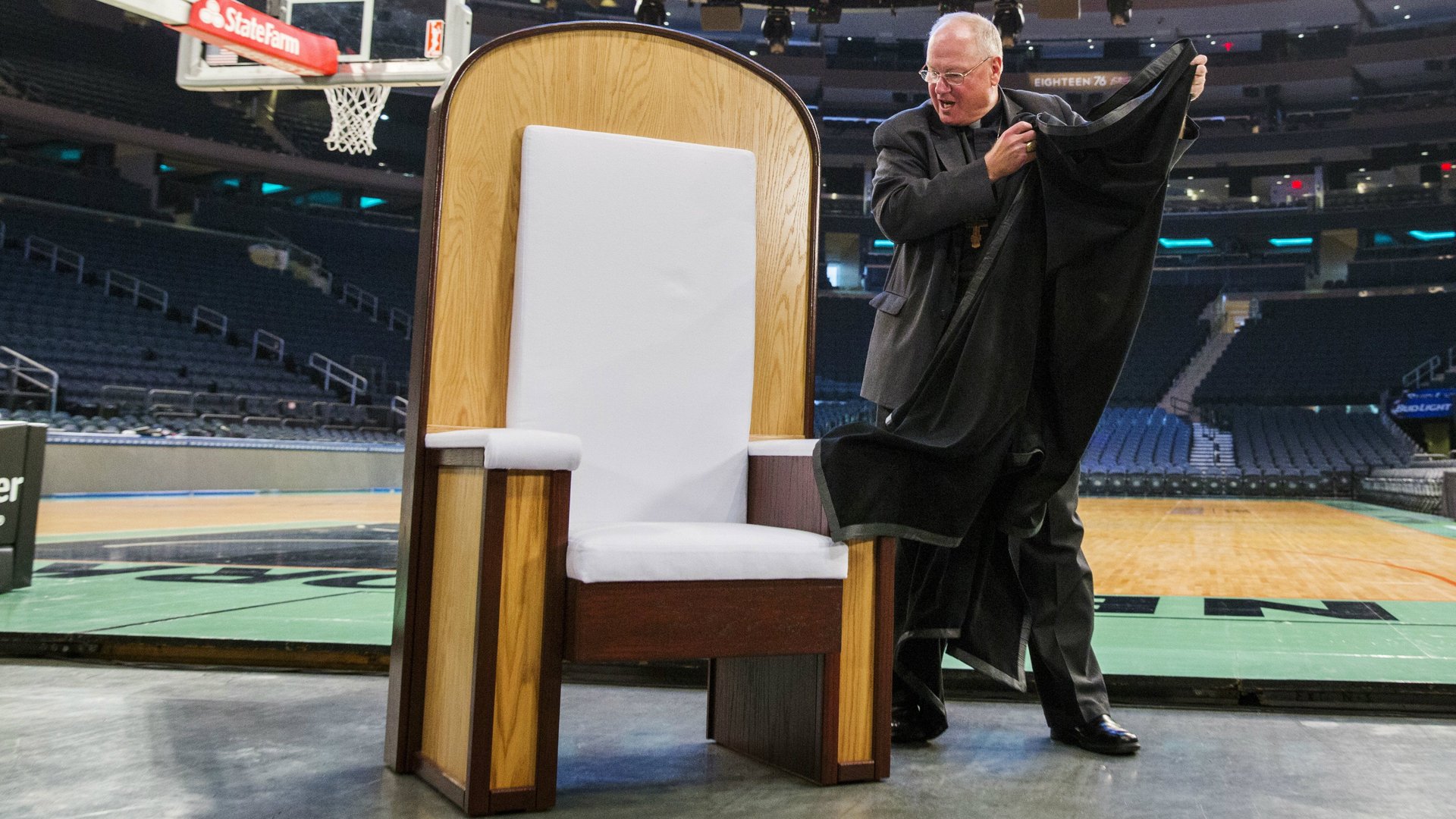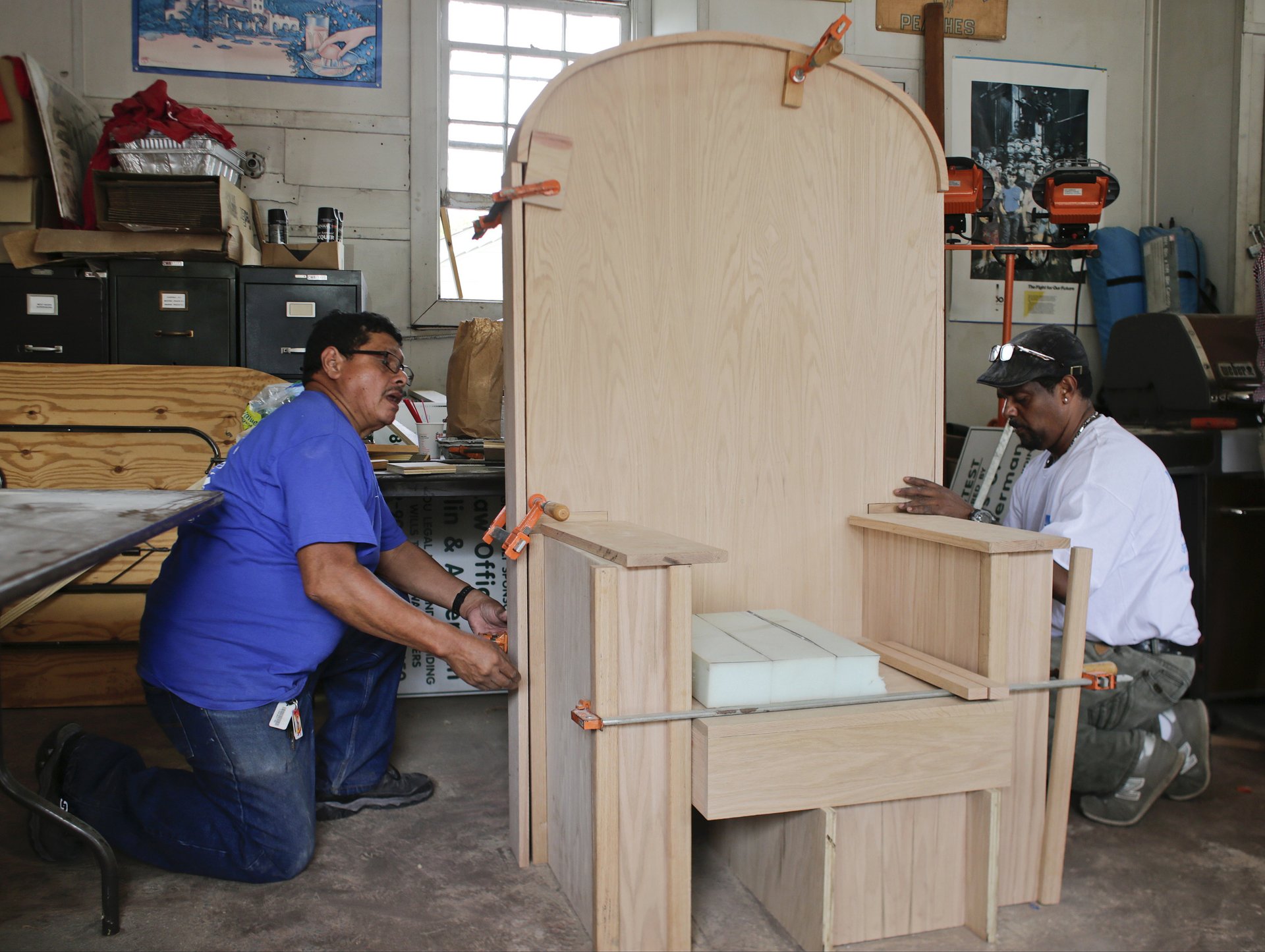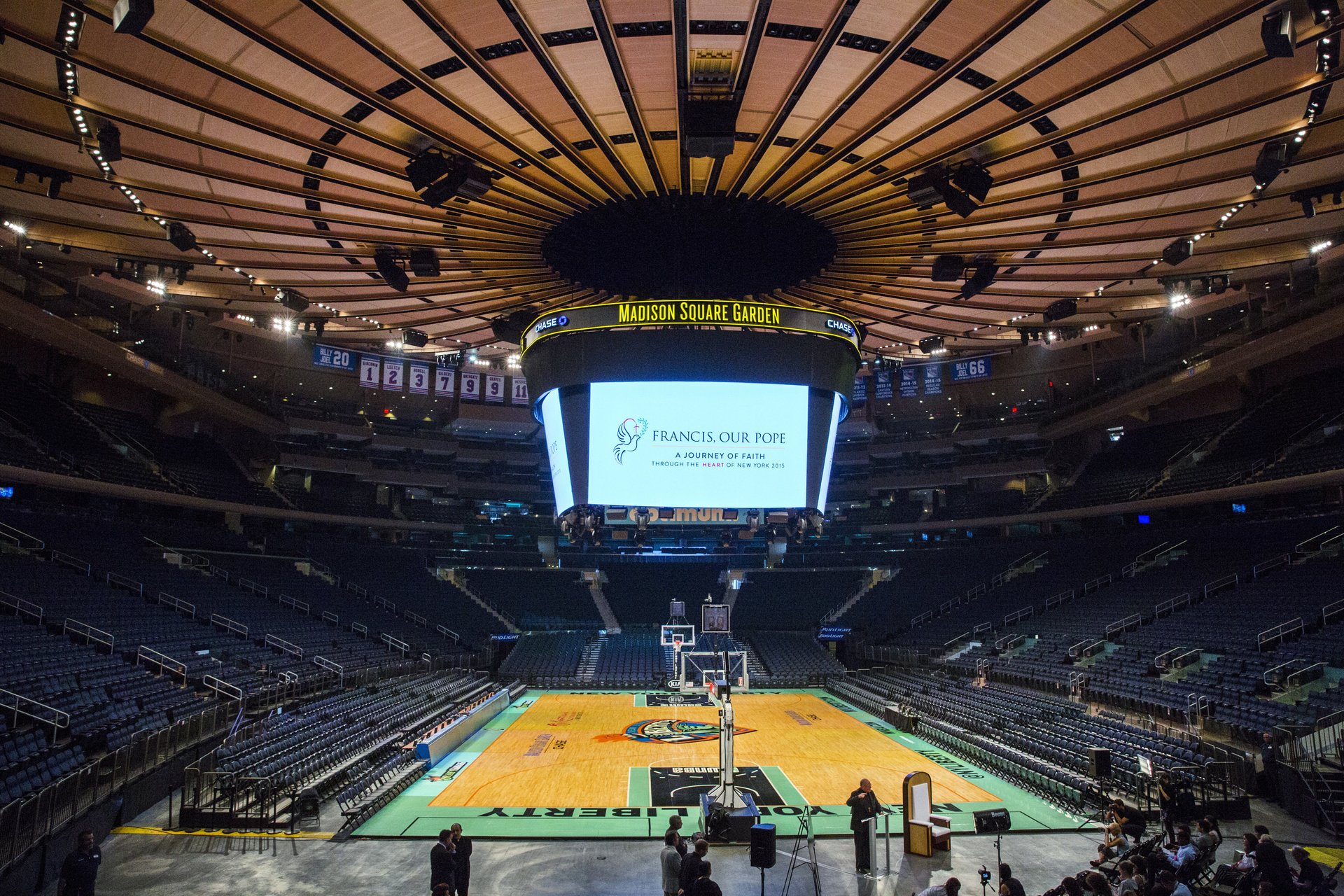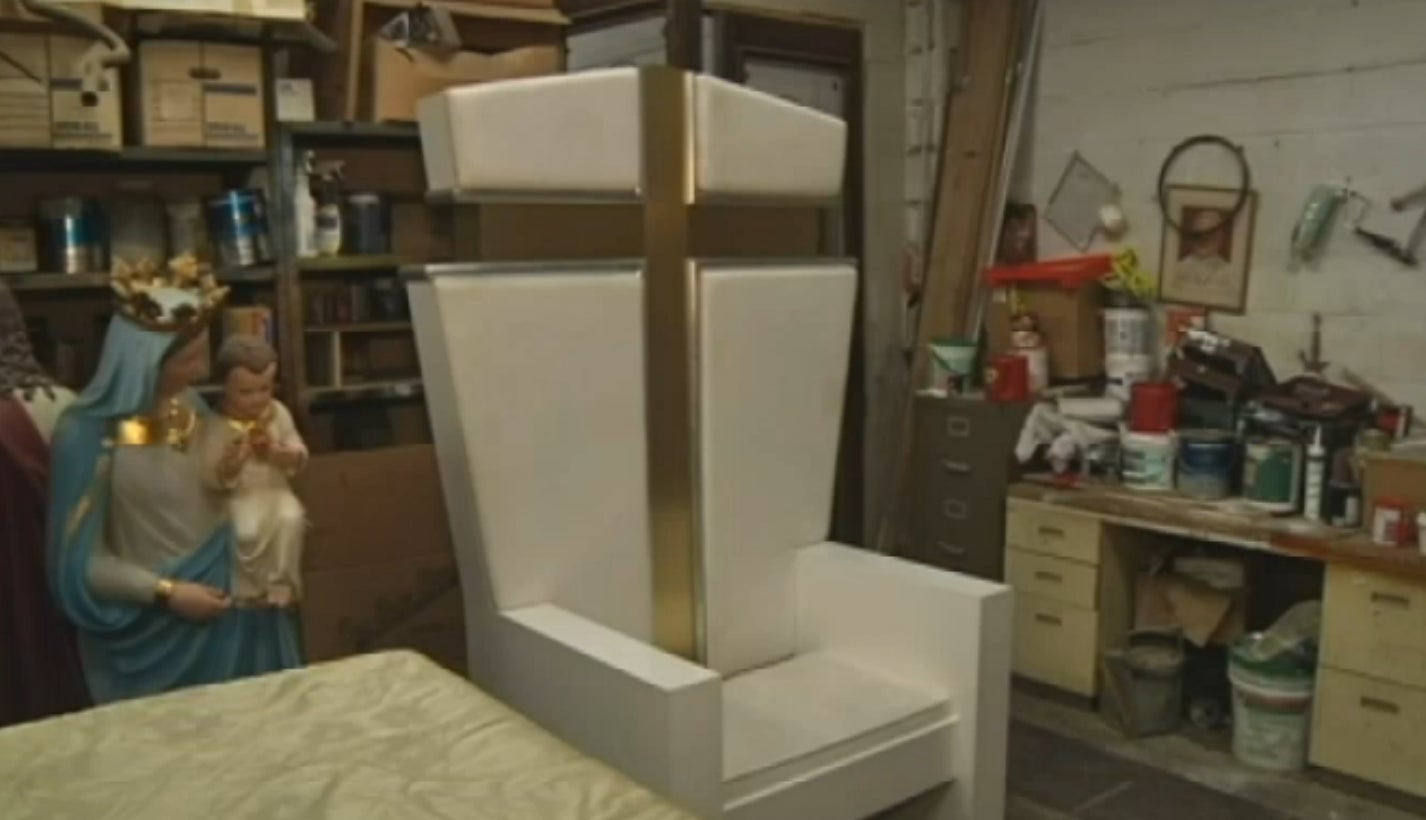It’s true, New York built a really ugly chair for the Pope
A chair is the quintessential design object. From Charles and Ray Eames to Frank Lloyd Wright, many renowned designers and architects have showcased their ideas and talents in this utilitarian piece of furniture.


A chair is the quintessential design object. From Charles and Ray Eames to Frank Lloyd Wright, many renowned designers and architects have showcased their ideas and talents in this utilitarian piece of furniture.
So it’s perhaps unsurprising that a rather crude-looking armchair built for Pope Francis’s visit to New York was met with disappointment and outright derision.
Designed by a stage props company and built by migrant day laborers in a two-car garage, the humdrum oak plywood chair with a mahogany trim and thin white cushions was unveiled by New York’s archbishop, Cardinal Timothy Dolan, to be used for the papal mass in Madison Square Garden on Friday, Sept. 25.
“He wanted something very simple. He wanted something wooden. He didn’t want any designs,” said Dolan, as he proudly gave the back of the chair a perfunctory pat for reporters during the chair’s unveiling earlier this month. The thump captured by the microphones betrayed the hollowness of the chair’s wooden frame and confirmed the cheapness of its construction. It’s the sound you hear when you slap a guitar—not exactly what you want to hear in solid furniture.
In comparison, the chairs prepared for the pontiff’s visits to Washington, DC and Philadelphia are appropriately austere but finely-crafted, and constructed with higher quality materials. When Pope Francis visited Bosnia in June, an ornate hand-carved chair was made in his honor.
But tributes come in many forms. And arguably, New York’s bland and basic chair—condemned by some as an act of “design blasphemy”—is really the most fitting homage to the Jesuit pope who has extolled simplicity and modesty as primary virtues.
Thou shalt not judge by looks alone
There’s no argument to be made that the chair’s form is remarkable. This custom-designed chair looks like it could have been ordered from the Church Supply Warehouse catalogue. “Simplicity was the main objective,” the chair’s designer, Jim Lenahan, tells Quartz. “Nothing ornate and fancy. I eventually came up with what I refer to as ‘a carpenter’s chair.’ After all, the Pope’s boss used to be one.” (He’s referring of course to the earthly occupation of Jesus.)
And perhaps it’s not just the chair’s profile but also its provenance that’s worth our attention. Hand-built by three carpenters—Fausto Hernandez, Hector Rojas, and Francisco Santamaria—who belong to the Don Bosco Workers hiring center, the so-called “Silla Sagrada,” or holy chair carries a message about the plight of unauthorized immigrant workers in the US, and testifies to their steadfast Catholic fervor amid a time when Christianity is ever more on the decline in the country. The names of the three builders, as well as wishes and intentions from visitors who watched the chair being made, are hidden under the arm caps and beneath the cushions, according to the Washington Post.

The chair’s white cushions were made by migrant workers in a Jewish-owned family business in Connecticut—which is actually a fitting design detail. The scheduling of the affable Argentine pontiff’s visit coincides with the Jewish holy day of atonement, Yom Kippur, but most don’t seem to mind. In fact, the US Jewish community has praised the pope for his strong stance against anti-Semitism, his Jewish friends, and his perceived liberalism on some social issues.
Thou shalt consider Billy Joel’s rock and roll lighting grid
Lenahan tells Quartz that the chair was specially designed to work with Billy Joel’s “rock and roll lighting set-up.” Joel was previously slated to perform at Madison Square Garden but gave up the venue when the Pope’s schedule changed. “He was supposed to be in there that night but he moved his show so the Pope could have the room, and he’s letting the Pope use his lights,” explains Lenahan, who worked with Billy Joel’s production designer Steve Cohen on the design of the chair, as well as the altar and lectern for the papal mass. “The curved top is meant to reflect the curves on our headers, which mask the [overhead] lighting,” he explains.

Thou shalt keep the big picture in mind
“[It’s] hard to talk about an entire design when you’ve only seen one piece,” Lenahan observes. This is a key point: In the bigger picture, the chair is going to be a speck in the papal spectacle, as the expected crowd of 19,000 devotees packs the massive arena.

And unlike the pope’s chair in Washington DC, which is being repurposed for the Basilica of the National Shrine, the chair in Madison Square Garden could well end up in storage or donated after the papal mass extravaganza on Friday. That’s what happened to his predecessor’s splashier art deco-inspired throne: After the papal mass in Yankee Stadium in 2009, Pope Benedict’s seat was eventually returned to its fabricators. It’s now stowed away in a corner of their workshop, blending in with the paint cans and bric-a-brac, as shown in this video report by NBC. Similarly, Pope Francis’ chair is not going into MoMA’s permanent collection—nor was it ever intended to be.
Of course New York’s chair could have been better looking, perhaps designed by some hip young furniture maker in Brooklyn. But with the pope’s preference for ordinary black shoes, recycled eye glass frames or the practical Fiat 500 compact as his vehicle during his US visit, this functional, humble chair will do the job. It’s fine—perfectly fine.